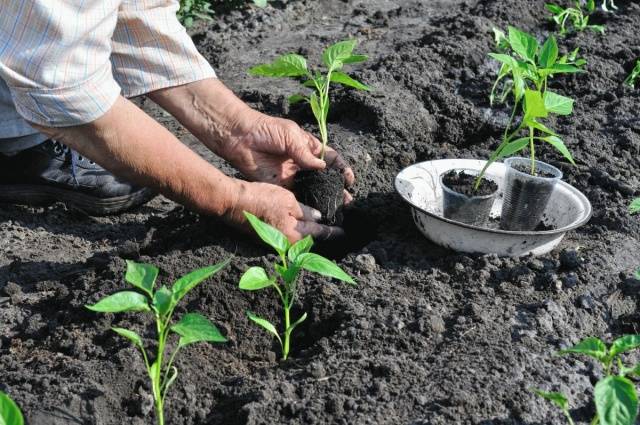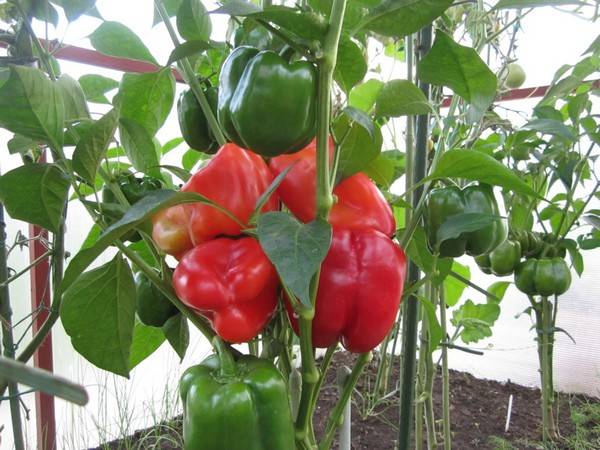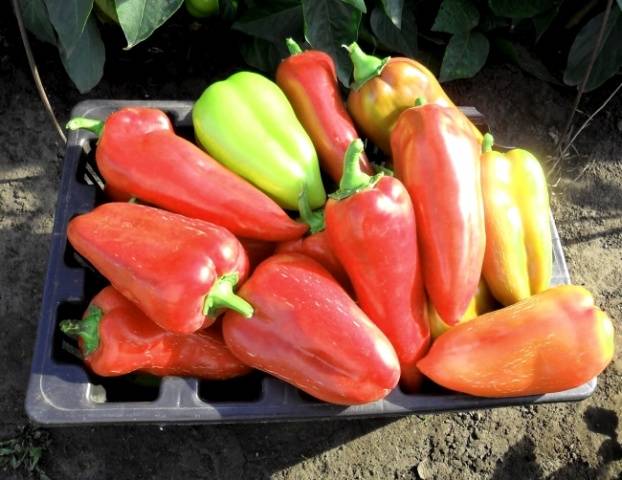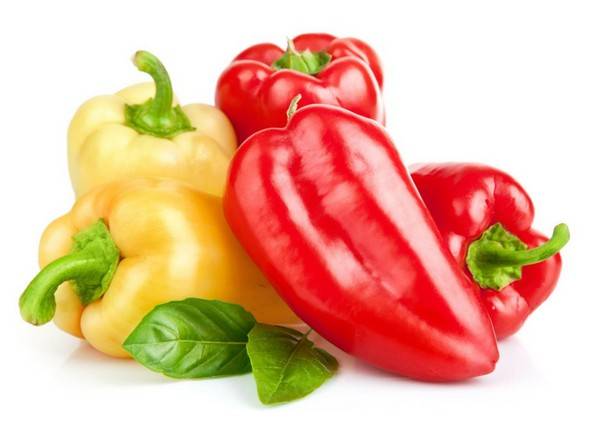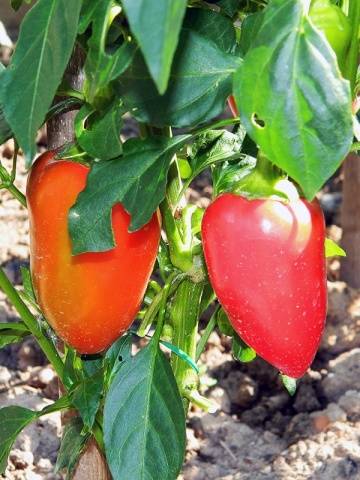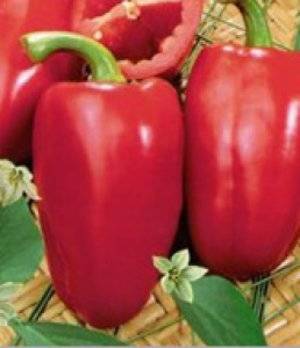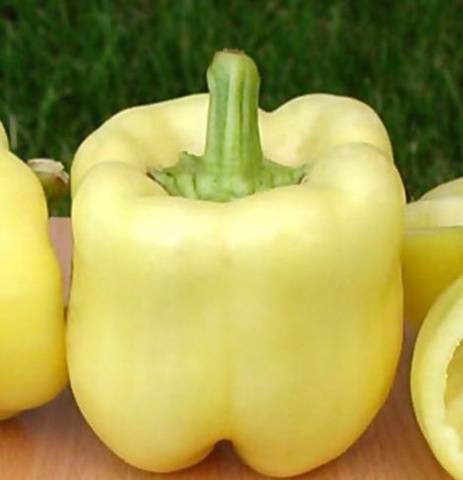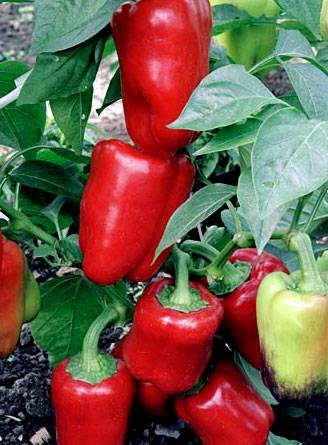Content
Growing the popular bell pepper in unprotected soil in the domestic climatic and weather conditions is not at all an easy task.
This is not surprising, because the vegetable culture originally grew in the hottest and most humid regions of Central and Latin America. However, despite this, the level of agricultural technology and breeding work in recent years has grown so much that it is quite possible to get a good harvest of bell pepper in unprotected soil conditions even in the Russian central lane. Which is successfully done every year by numerous amateur gardeners.
Tips for choosing a pepper variety
In the absence of sufficient experience, it is not easy to choose the right seeds for planting from the extremely wide assortment offered today in any specialty store. Therefore, you should be guided by some general rules:
Carefully study the description (always placed on the seed bag) of the variety and what is most important, for what conditions it is intended.
First of all, you should decide on the ripening period that a particular gardener needs based on how much time he has for growing pepper. According to the ripening period, all varieties are divided into three groups:
- Early ripe (80-100 days). These peppers are best suited to unprotected ground conditions when the period of stable warm and sunny days is relatively short.
- Mid-season (115-130 days). They can also be used for open ground, but will require a little more attention to get a decent harvest.
- Late ripening (up to 140 days). The use of such varieties sweet pepper for planting in open ground is quite problematic - they simply do not have time to show their best qualities and properties.
Secondly, special attention is required to be paid to the resistance of the selected pepper variety to diseases and pests that are most common in this particular region. Insufficient attention to this issue can lead to the fact that all the work on growing and caring for the vegetable will be in vain because, as always, the disease of the plant manifested itself at the wrong time.
Thirdly, you should pay attention to the varieties of sweet pepper, regionalized for a specific region where it is planned to grow.
Fourthly, every gardener must decide for himself, focus on hybrids or varieties of vegetable crops. Each of the options has its own undoubted pros and cons. The main advantage of the varieties is the ability to independently obtain seeds for future harvests, as well as their lesser whimsy to conditions and care with a more stable yield, although not such a high yield. The advantages of the hybrid are also noticeable - high yield and distinct taste. An additional plus is that the seeds of hybrids do not require much preparation for sowing, since most of the activities have already been carried out in the seed farm.
Compliance with these simple tips will allow the gardener to choose the most suitable for his region and the variety or hydride of sweet pepper for him.
Features of agricultural technology
The cultivation of bell pepper in unprotected soil has some peculiarities.
Seeds can be planted both in special disposable cups (their volume, as a rule, 250 ml), and in large containers (boxes, containers, etc.), the planting depth of seeds is usually 1.5-2 cm.
Caring for pepper seedlings intended for planting in open ground, in its agricultural technology, in principle, does not differ from caring for ordinary seedlings: standard procedures for loosening, watering and hardening are performed. If they are performed correctly, by the end of May, the time for planting the grown seedlings in open ground will come.
It is better to produce it on a warm sunny day. Seedlings of bell pepper are planted, as a rule, in two rows, the usual bed width is about 1 meter. The distance between the nearest plants should be equal to or greater than 0.3 meters, between adjacent rows - about 0.5 meters.
The best peppers for outdoor use
A fairly large number of varieties and hybrids are universal, that is, they can be grown both in protected conditions of greenhouses and film coatings, and in open ground. It's just that in the second case, much more plant care is required. But some varieties are bred mainly for open ground. To complete the picture, it is necessary to study the properties of both.
Orange
Bulgarian variety pepper orange is mid-season. It has a small bush, rarely reaching 45 cm in height. The fruits of the vegetable crop have a bright orange or red-orange color, an elongated rounded shape, and a smooth surface. The peppercorns are small, their weight, as a rule, is less than 40 grams.
A distinctive feature of the Orange variety is a special sweet taste and a distinct aroma of the fruit. According to the method of use, it is universal, perfect for both salads and for canning or making lecho.
Through the efforts of breeders, the sweet pepper variety has been given properties that promote open field cultivation in central Russia, namely: unpretentiousness to conditions and care, the ability to withstand the effects of low temperatures. In addition, the variety is quite disease resistant.
California miracle
One of the most popular varieties of bell peppers for open ground among gardeners. The vegetable culture is mid-season. The bush of the plant is quite compact and large - its height can reach 1 meter. In addition, the bush of this variety is characterized by powerful and elastic branches, so it does not need a garter. The fruits of the California miracle are large enough, weighing up to 120-150 grams of peppercorns. Moreover, their structure is very fleshy, dense. The peppercorns are bright red in color, have a regular cuboid shape and a slightly ribbed surface.
Californian miracle variety it is universal both in the place of cultivation (both in unprotected and in closed ground) and in the way of consumption (salads, heat treatment during cooking, canning). Taste properties are pronounced and appreciated by numerous gardeners.
An additional advantage of the variety is its resistance to most diseases, in particular, verticillary wilting. This is also why the variety stands out for its high and very stable yield, with extreme unpretentiousness in growing conditions and caring for it.
Gift from Moldova
No less popular and widespread than the previous variety of pepper. He, like the previous one, refers to mid-season varieties of vegetable crops. The bush of the plant is low, rarely exceeds 0.4 meters, with medium spreading. The peppercorns have a conical shape, a characteristic red color with a dark shade, and are distinguished by a pronounced fleshy structure of the fruit. They are relatively small in size, the mass of which in most cases is 70-80 grams.
The variety is excellent for unprotected soil, but can also be planted in greenhouses. It is unpretentious to growing conditions, has a high degree of resistance to wilting.The popularity and wide distribution of the variety has brought its high and stable yield, which, combined with its high adaptability to a variety of conditions, makes it extremely attractive for gardeners.
The taste of the culture is quite high; most experts recommend it primarily for canning.
Swallow
Swallow variety refers to a mid-season variety of vegetable crops. The height of its bush is about half a meter, and the shape is semi-spreading. The peppercorns have a characteristic light green color and a regular conical shape, slightly rounded. The fruits are relatively small in size, rarely reaching 90-100 grams, as well as a dense and smooth skin.
The variety was bred specifically for open ground. It has sufficient resistance to various diseases, in addition, high yields and can withstand transportation well. Also, the Swallow variety is able to withstand the effects of cold temperatures and even autumn frosts. Most often used for canning.
Siberian prince
The Siberian Prince variety is one of the early ripening varieties. Vegetable bushes are relatively low, semi-spreading in shape. The peppercorns have a very rich and bright red color, a fleshy inside and a skin that is smooth to glossy. The size of the peppercorns is usually small, rarely exceeding 100 grams. The shape of the fruit is a regular cone.
The sweet pepper variety is bred for open ground, but it may well be planted in a greenhouse. The Siberian prince has one peculiarity of agricultural technology - it is necessary to periodically cut off the lateral shoots from him, otherwise the peppercorns will grow small. Seedlings of the variety do not need picking.
One of the main advantages of the variety is its excellent taste and peculiar aroma. According to the method of consumption, the variety is universal, because it can be used both in salad form and for various canning.
Ermak
This variety belongs to early ripening (95 days). It was developed by the Pridnestrovian Research Institute of Agriculture and can be used in open and protected ground. The variety is zoned for the territory of Russia. The bush of the plant is low, rarely reaches 35-45 cm. The peppercorns have a pyramidal shape and are quite large, their weight reaches 85-95 grams with an average wall thickness of about 6 mm. Peppers have a distinct dark green color at the stage of technical maturity.
The variety stands out for its high taste properties and can be used in any form: in salads, after heat treatment and for canning.
In addition, the variety has a high degree of resistance to many diseases, in particular, verticillosis, tobacco mosaic virus. In addition, it resists adverse climatic conditions well.
Nikitich
The variety Dobrynya Nikitich belongs to the early maturing. Technical maturity occurs 3.5-4 months after germination. The vegetable crop has a stunted bush and a strong stem.
The peppercorns have the shape of a rectangle or trapezoid, a glossy surface without signs of ribs. The fruits are relatively large, often their weight exceeds 120 grams, while the wall thickness can vary greatly - from 0.4 to 0.8 cm.When the technical ripeness is reached, the peppercorns acquire a yellow color, which turns into red as it ripens further. The Dobrynya Nikitich variety can yield up to 3.6-3.9 kg / sq. m.
Belladonna F1
Bulgarian hybrid belladonna pepper is early maturing. The bush of the plant is compact. The hybrid can be successfully grown both in unprotected and in closed greenhouses.
Peppers at the stage of technical maturity have a rare milky white color, which turns into a bright orange as it ripens. The fruits are quite large, with a wall thickness of 6-7 mm and have a regular and attractive outwardly cubic shape with dimensions of about 10 * 11 cm.
An earlier date for the appearance of the first peppercorns is achieved by the absence of picking of seedlings. The hybrid is quite popular among gardeners, which is explained by the combination of a relatively high yield and excellent taste of the fruit.
Isabella F1
The Isabella hybrid is a mid-season hybrid, which allows you to start harvesting fruits after 120 days. The bush of the plant is quite tall, closed. The peppercorns are prismatic, slightly elongated and bright red at the stage of technical maturity. They are quite large, often reaching a mass of 160 grams or more, while having a wall thickness of up to 8.5 mm and a fleshy structure.
The hybrid is unpretentious in care, for its successful cultivation, the usual activities are quite enough. By the way of consumption - universal, suitable for salads, heat treatment and canning.
The variety has a fairly high yield - up to 6-8 kg / sq. m, which is achieved by the simultaneous ripening of 20 peppercorns on the bush.
Cheerfulness
Variety Vodrost is a medium early plant. The first fruits reach the stage of technical maturity at 95-105 days. The vegetable bush is rather tall, of a closed structure, has glossy, elongated ovoid leaves.
The fruit is rather small, in the shape of a regular cone with a slightly ribbed surface. Peppers at the stage of technical maturity have a light green color, then, upon reaching biological maturity, they turn red.
The weight of the fruit rarely exceeds 80 grams, the thickness of the walls of the peppercorns is 5-6 mm.
Bell pepper variety differs in a combination of two main advantages:
- high yield, reaching 9.9 kg / sq. m .;
- excellent taste properties of the fruit.
In addition to the above, the variety has a high degree of resistance to diseases and pests found in domestic conditions.
Conclusion
The improvement of agricultural techniques and selection work made it possible for gardeners to get decent yields when growing sweet peppers even in difficult open ground conditions. The main thing for this is the correct choice of the variety and compliance with the requirements for caring for it.

